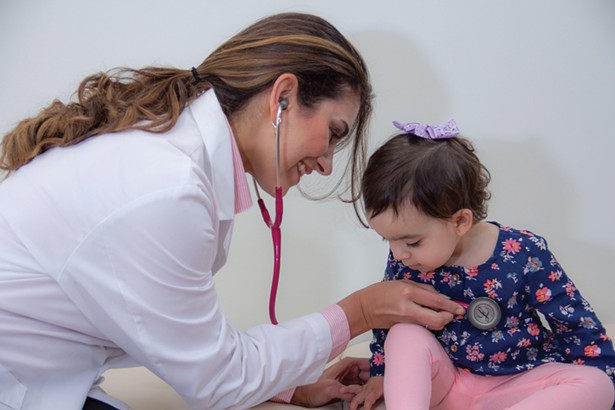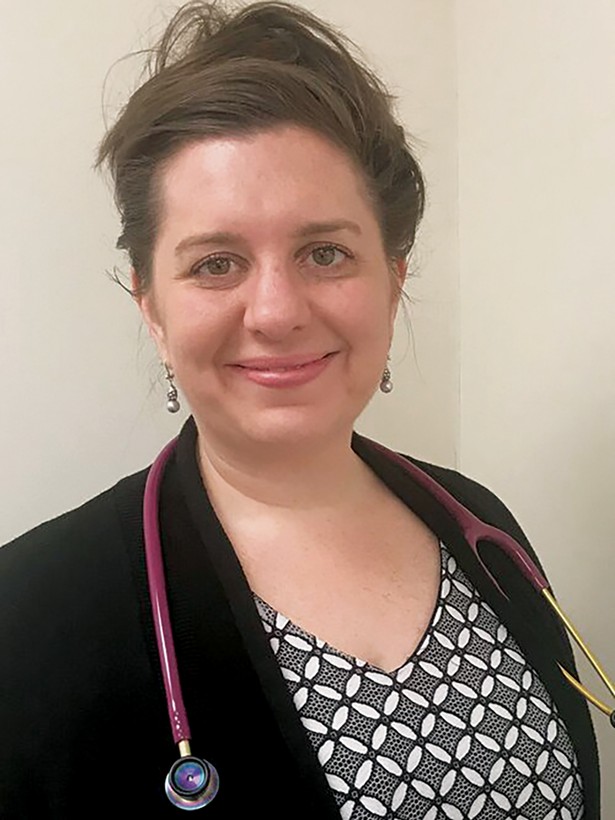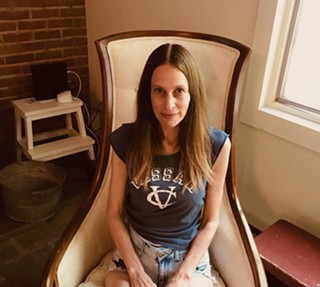
David Mendez was tired of the medical status quo. He’d had enough of waiting two to three months for an appointment, sitting endlessly in waiting rooms, and then getting to see his doctor for a scant 15 minutes. “Most of that time, they’re looking at a computer,” says Mendez, an engineer from Pine Bush. “And they’re asking the same questions they did before. There’s no time for connection. It’s more of a big corporation, healthcare now, and to me it’s more about money than the patient nowadays.” When a friend from New Jersey told him about direct primary care (DPC), Mendez was intrigued. DPC is an alternative form of primary care that cuts insurance companies out of the equation—and for a monthly membership fee comparable to the cost of a cellphone plan (around $75/month for an adult), it gives you a kind of access to your doctor that hasn’t been available since the days of house calls. Some DPC doctors will even make house calls in certain cases, and most offer unlimited office visits as well as easy access through phone, text, email, and telehealth.
Mendez did some research and discovered a DPC doctor right in Pine Bush—Dr. Ericka Valenzuela (known to her patients as Dr. V) of WeCARE Medical Office. He was able to schedule an appointment quickly, and when he arrived at the office there was no wait. “You go right in to see the doctor,” he says. “She takes the time to listen and tries to find solutions for both you and the medical condition you have.” Last December, when he had a sharp pain in his abdomen, Dr. Valenzuela saw him after hours through telehealth and prescribed an ultrasound the same evening—saving him a trip to the ER or urgent care during COVID. Turns out, he needed surgery for a gallbladder infection. Valenzuela contacted a surgeon herself to get him on the schedule. “Afterward, she called me a couple of times just to make sure everything was okay,” he says. “I’ve never experienced that with another doctor.”
After trying out DPC on his own at first, Mendez signed up with his wife and their two kids for a family membership. Like many DPCs, Valenzuela treats patients of all ages, and her attentive approach has motivated the family to make healthy lifestyle changes. “When I was going to the network doctor, they said, ‘We need to upgrade your blood pressure medication,’” Mendez recalls. “But with Dr. V it’s like, ‘You need to exercise, you need to eat more properly.’ It was that combination that allowed me to lower my blood pressure, and now she’s actually reducing the medication that I take. It was just little adjustments that I needed to make to get my health back on track.” DPC doctors don’t take insurance, but that’s not a deal breaker for Mendez. “The readiness and rapid responses that I get from Dr. V are well worth the monthly payment,” he says. “I like the doctor-patient bonding that we have.”
Old-School Doctor with a New-School Feel
In a healthcare world where both patients and doctors can feel disempowered, direct primary care offers a lesser-known yet intriguing alternative to the current system. And it’s certainly no secret that the system is broken. The US spends twice as much money on healthcare as other wealthy nations, yet our health outcomes are poorer. The rising costs of health insurance, and an array of fees and copays for everything from imaging to bloodwork, dissuade many people from seeking the basic care and preventative services they need to safeguard their health. A 2020 Harvard study in the Annals of Internal Medicine found that adult visits to primary care providers fell by 25 percent between 2008 and 2016. Doctors themselves are overburdened: Your average family physician has about 2,300 patients in their panel, seeing at least 25 patients a day for roughly 16 minutes each. Dictating it all is a fee-for-service system that, all too often, values patient volume over quality of care.It wasn’t always this way, but the trend toward a more corporate, insurance-driven style of healthcare is leaving both patients and doctors exhausted—and starved for the real connections that most humans need to heal and be healed. “I think the insurance companies have way too much control over patient care, and there’s a whole history as to how things came to be that way,” says Catherine Agricola, MD, a DPC doctor in Newburgh. “The insurance company role somehow got very skewed to be a medical authority, and that’s become a problem. DPC combats that, because it dissolves that power dynamic and brings it back again to the doctor and patient relationship. It empowers people on both sides to think about providing healthcare in a mutually acceptable way.”
Direct primary care took root in the Midwest about 20 years ago, and it’s been gaining traction in some corners of the US, including the West Coast and Southeast. Over 950 DPC practices serve patients nationwide, but the model has been slower to catch on in the Northeast. In the Hudson Valley, Dr. Agricola and Dr. Valenzuela are pioneers, offering the only two DPC practices in the region. Both doctors fled from a world of corporate medicine that felt unsustainable. “We hear a lot now about physician burnout, and that’s because of the demand that’s put on doctors in the corporate model,” says Valenzuela. “I felt like I was driving patients through an assembly line. I didn’t want to be that kind of doctor.” There’s also the moral injury of not being able to provide the kind of care for your patients that aligns with your values and philosophies.
After 15 years in the system, Valenzuela considered quitting clinical practice to teach medicine full-time—until she heard about DPC from a keynote speaker at a medical conference. “I was flabbergasted. What he was explaining sounded like everything I wanted to be as a doctor.” She took a year and a half to learn more about DPC and get her ducks in a row before opening WeCARE in the fall of 2019. Agricola made the switch to DPC around the same time—just before COVID hit and changed everything.
Pandemic Pivots and Personalized Care
Sometimes it takes a crisis for people to break out of their old ways of doing things and try something new, especially when it means taking on a monthly expense. “Before COVID, there was more of a barrier where patients felt that they had insurance, so why should they pay extra [for DPC]?” says Valenzuela. That barrier fell away for many people at the beginning of the pandemic, when suddenly, access to a doctor was nearly impossible to come by. “New patients were calling and asking to be seen, and initially, to help with the community crisis, I let people come for a one-off visit without being a member. A lot of those people ended up becoming members once they saw how this is a more personalized office. If accessibility is important to someone, this model really resonates with them. Our focus is on attentive, accessible, and affordable care.”Andrea Dryden, a teacher from Kingston, had been thinking of switching to DPC for her primary care before COVID, but the pandemic sealed the deal. Both she and her young son had been patients at Agricola’s previous practice, and she’d always liked Agricola’s style of care. But Dryden (not her real name), who was relatively healthy, wasn’t sure she’d use DPC enough to justify the cost. “A couple months in [to COVID], I started feeling like, I might want to have a doctor that I actually know if I’m living through a global pandemic,” she says. She’d also changed jobs recently and had the option of choosing a high-deductible health insurance plan. “That freed up some of my money to be able to join her practice,” she adds. “I also wasn’t as worried about taking on a high-deductible plan, because I knew that now I’d have access to this doctor.”
When Dryden, who’d been vaccinated, came down with a mild breakthrough case of COVID in August, she was relieved to have Agricola in her corner. “Just to have a doctor to talk to, who was able to tell me what to do and what to expect, and to help me navigate some of the health department issues, was really great,” she recalls. The toughest part for Dryden was figuring out how to keep her nine-year-old son COVID-free and when to safely transfer him to her mother’s care—and Agricola helped her come up with a timeline and COVID testing plan accordingly. Agricola also checked in with her frequently by phone and text, offering a level of support that was indispensable—and that went far beyond the “stay hydrated and good luck” advice that Dryden’s other COVID-infected friends were getting from their doctors.
A Quarterback for Your Health
If there’s one type of person that’s a good fit for DPC, it’s someone who wants to engage in their health and be an active participant in the journey. It’s also someone who sees the value of primary care as a gateway to good health—whether it’s screening for cancer, getting blood sugar under control, or making dietary changes. Many DPC practices are family businesses, and Valenzuela’s husband, Arthur, makes himself available to patients as a health and nutrition coach. “The reason why we want access to be easy, and why we offer unlimited visits, is because the more you see us, the more we keep you away from the hospital and the ER,” says Valenzuela. “We want it to be easy for patients to have a primary care doctor, so we can catch elements early and prevent them from becoming full-blown medical issues.”An extraordinary level of care does not come cheap, and in a world where everything has a subscription fee lately, the idea of another recurring cost can be daunting. Some people get around it by using a Health Savings Account (HSA) card for their membership fees. DPCs recommend having at least a high-deductible health insurance plan, but for the uninsured and underinsured, they try to help patients find affordable options for everything from bloodwork to prescription medications. There are also out-of-the-box alternatives to insurance, such as medical cost-sharing programs (“these are basically a pot of money that you contribute to monthly,” says Agricola, “so that when or if something happens, it’s there to help buffer you”).
Still, when it comes to your health, says Agricola, “it’s easy to have so many excuses. People might say, ‘I can’t come into the office, I can’t afford my medications,’ all this stuff. And I say, ‘I’ll problem-solve all of that with you. I’m working for you.’ It makes for a whole different experience. People are able to feel more empowered and start shifting their mindset, which is kind of cool to see.”
It’s a dynamic that’s as satisfying to patients as it is to the doctors who care for them. “In this model, I have a lot more time to explain things to patients, answer all their questions, and make sure that when they leave, they’re clear on the instructions,” says Valenzuela. “I have time to write out a plan for them, whether it’s holistic or with traditional medications. I have time to be thorough. I’m just so excited to be a doctor again.”













